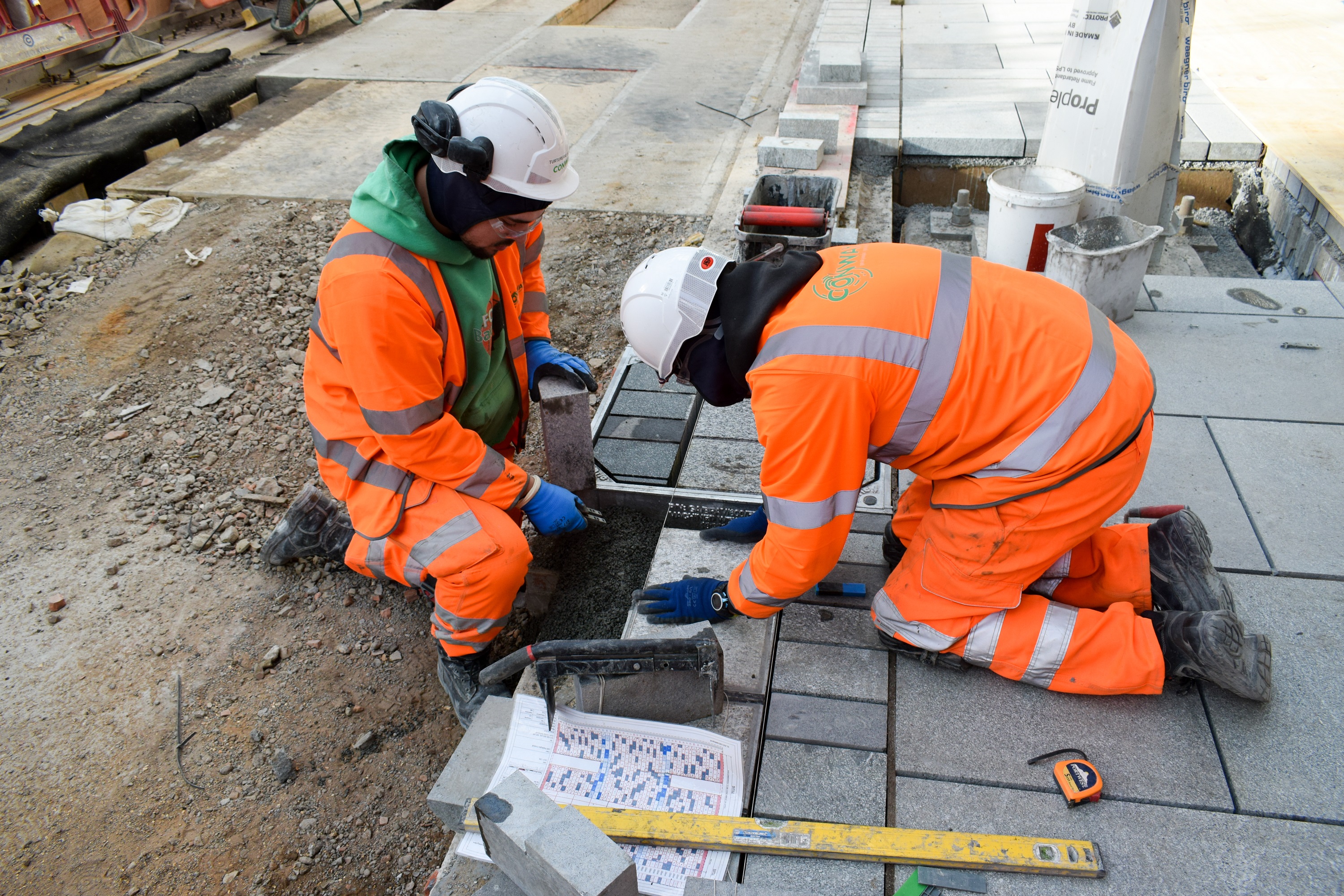Challenges and Solutions
The main issue the project faced was ensuring the works would remain durable, with a high footfall expected on the area.
Once the new line has opened, the station is expected to see:
- 174,000 passengers predicted per day on the Elizabeth line
- 34 trains per hour (peak, 24 east and 10 west)
- And will serve as an interchange for Bakerloo, Circle, District, Hammersmith & City lines and National Rail
Initially, 15 trains an hour will run through the new Elizabeth line tunnels, rising to 24 an hour in the central section by May 2019. When the line is fully operational, 20 trains an hour will run off-peak services between Paddington and Whitechapel. A further two trains an hour will operate between Paddington and Shenfield, and between Paddington and Abbey Wood during off-peak hours.
Peak services to destinations west of Paddington will be improved significantly, with services from Reading doubled from two to four trains an hour, and services to Maidenhead increased from four to six. Trains will also call at Heathrow Terminal 5, meaning all Heathrow terminals will be served by the Elizabeth line.
The scale of the project has called for FM Conway to draw on expertise from across the business to deliver the project. Alongside its master paviors, this has included working closely with the lighting, surfacing, consultancy and traffic management divisions to ensure the works are carried out on time and to a high specification.
Joe adds: “This project has been one of the most challenging, yet exciting of my career. It has been fantastic to see FM Conway’s different strengths coming together to deliver the works, as well as working closely with the other Crossrail contractors and partners. Good coordination is vital for a project of this scale. Even the logistics of transporting materials to this compact central London site has had to be carefully planned.”
Throughout the project, the team also faced a further challenge in the form of the site’s historic location, as it was vital that the site’s famous grandeur was treated with the utmost respect.
By working with a specialist partner, FM Conway was careful to protect Paddington’s Grade-1 listed station building and existing Royal Mail tunnels during the demolition of reinforced concrete structures on site, adhering to strict vibration and noise restrictions.
Joe continues: “The nature of FM Conway’s work in the capital means that we often need to accommodate historic buildings, existing infrastructure, and even national monuments. The project at Paddington is no different.”

